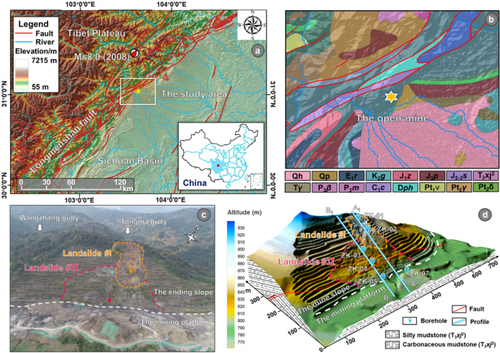Geomechanics and Geophysics for Geo-Energy and Geo-Resources ( IF 5 ) Pub Date : 2024-04-20 , DOI: 10.1007/s40948-024-00795-5 Tao Wei , GuoQing Chen , Zhou Zhu , Peng Tang , Ming Yan

|
Mine slope stability and mining sustainability are related to the local geological structures, which could change the rock mass structure in deep mining. After 20 years mining in a mudstone mine, western China, the slope structure transforms from anti-dipping structure into a bedding structure by a recently discovered fault (F1), further inducing the two landslides (Landslide #I and Landslide #II). Landslide investigation suggested the residual deposits in Landslide #I first slid over 100 m and overburdened the rear of Landslide #II. The bedding rock with weak interlayers at footwall is separated from the anti-dipping rock at the hanging wall by F1. After excavation, a weak interlayer was exposed and softened by rainfall, resulting in the slip of footwall rock mass and further inducing large scale toppling deformation. The fragmented rock mass sliding along a weak interlayer triggers consequent deformation of adjacent slope, reducing safety reserve of the open mine. The discrete element analysis reveals that the bedding rock mass of footwall slid once the weak interlayer was exposed by mining. And retrogressive deformation transmitted to the hanging wall and induced bending and toppling deformation of anti-dipping rock mass. Mine feasibility assessment should recognize the potential deep geological structures as important in the future.



























 京公网安备 11010802027423号
京公网安备 11010802027423号